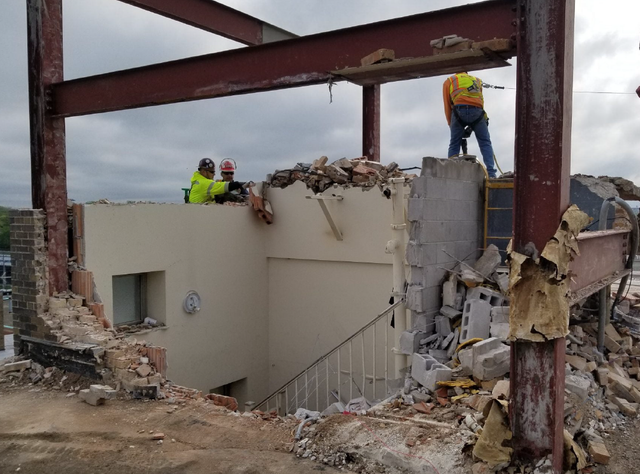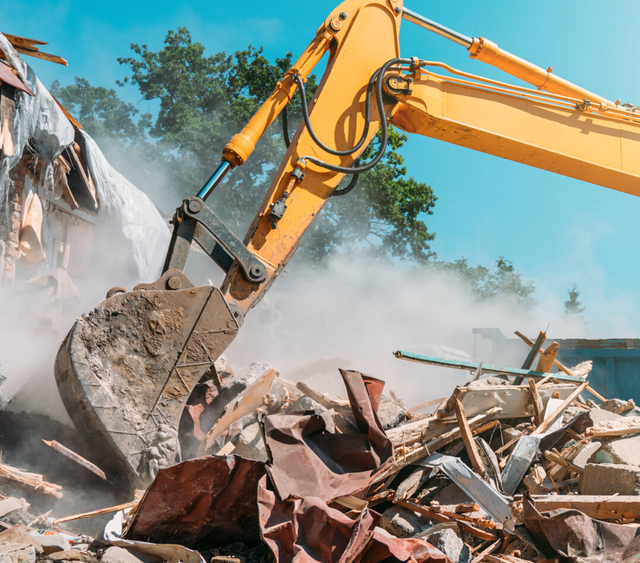Specialist Tips for Managing Dirt Throughout Interior Demolition
Specialist Tips for Managing Dirt Throughout Interior Demolition
Blog Article
Insider Tricks for Simplifying Your Inside Demolition Process
Numerous experts in the industry have honed insider tricks that can significantly improve the demolition process, making it smoother and a lot more economical. There is one critical facet that often goes overlooked, and it might be the game-changer you need to raise your demolition procedure to an entire new level.
Preparation and Preparation
In the first stages of indoor demolition, meticulous preparation and extensive prep work are important for ensuring a effective and smooth procedure. This includes recognizing key locations for demolition, assessing prospective threats, and developing a clear timeline.
Creating a thorough plan that details specific tasks, duties, and deadlines will work as a roadmap throughout the demolition process. Additionally, acquiring any required licenses and making sure compliance with policies are essential actions to stop delays or issues. Ample website prep work, consisting of precaution and defense of bordering frameworks, is additionally a crucial aspect of the planning phase.
Furthermore, designating resources efficiently, such as manpower and equipment, can streamline procedures and boost productivity. By investing effort and time into precise planning and complete prep work, indoor demolition jobs can be carried out with precision and effectiveness, ultimately leading to effective results.
Effective Tool Option
With the structure of careful planning and complete prep work laid, the following important step in streamlining indoor demolition processes is the strategic option of effective tools. Picking the right devices can significantly influence the speed and effectiveness of the demolition task. When choosing tools, it is vital to consider elements such as the sort of materials being knocked down, the size of the space, and the availability of the area.
One key device for indoor demolition is the crowbar, which serves for removing walls, trim, and various other materials - interior demolition. A reciprocating saw is suitable for puncturing drywall, timber, and various other materials swiftly. For larger demolition tasks, such as breaking down walls, a sledgehammer or demolition hammer might be essential


In enhancement to portable devices, power tools like a demolition hammer or rotary hammer can make the process much more efficient. Dust containment tools, such as a HEPA vacuum cleaner, are additionally important for maintaining a secure and tidy workplace. By meticulously picking the right devices for the job, interior demolition can be finished better and with less effort.
Waste Monitoring Approaches
Reliable waste management techniques are essential for keeping a structured and eco mindful indoor demolition process. This entails categorizing products such as wood, metal, concrete, and unsafe waste independently to improve the recycling procedure.
Additionally, partnering with respectable waste management firms can aid in sensibly disposing and taking care of of demolition waste. These business have the competence and resources to manage various sorts article source of waste efficiently, guaranteeing that products are gotten rid of based on regulations.
Applying a waste administration strategy prior to beginning the demolition procedure can aid identify possibilities for recovering products that can be reused or recycled, minimizing the quantity of waste sent out to land fills. Additionally, utilizing advanced technologies such as waste tracking software application can improve openness and liability throughout the waste monitoring procedure. By incorporating these approaches, indoor demolition tasks can be implemented efficiently while prioritizing sustainability and environmental stewardship.

Group Interaction Methods
Assisting in seamless coordination amongst staff member is important for the success of any indoor demolition task. Efficient communication strategies play a crucial duty in making certain that all staff member get on the exact same web page and functioning towards an usual objective. One essential strategy is to establish clear networks of communication from the outset of the job. Utilizing devices such as task administration software program, messaging applications, and regular team meetings can aid keep every person informed and involved throughout the demolition process.
One more vital aspect of team interaction is establishing assumptions and obligations for each group participant. By clearly defining jobs and roles, confusion and misunderstandings can be lessened, bring about an extra efficient and productive process. interior demolition. Urging open discussion and responses additionally fosters a collaborative environment where group participants really feel comfy sharing concepts and addressing issues
Regular check-ins and development updates are crucial for making certain that the task remains on track and any potential issues are attended to immediately. By carrying out these interaction methods, interior demolition groups can enhance their processes, enhance effectiveness, and eventually attain effective project outcomes.
Safety And Security Measures and Protocols
How can interior demolition teams ensure the highest degree of safety and security on their jobs? Safety and security actions and procedures play a vital function in preserving a protected atmosphere during demolition tasks. To focus on safety and security, groups must begin by performing a comprehensive threat evaluation of the site prior to beginning any job. This evaluation should recognize possible risks such as structural instability, electric dangers, or the visibility of harmful materials.
Additionally, it is important for all staff member to receive appropriate training on security treatments and protocols details to demolition work. This includes proper handling of devices and equipment, along with comprehending emergency feedback procedures. Individual safety devices (PPE) need to be required for all workers on-site, consisting of hard hats, goggles, handwear covers, and helpful site steel-toed boots.
Regular security assessments and tool kit talks can help strengthen safety methods and maintain all staff member notified and vigilant. In addition, having an assigned safety and security policeman or manager overseeing the demolition process can supply an extra layer of protection and guarantee that security methods are being followed vigilantly. By carrying out directory these safety and security steps and protocols, indoor demolition groups can minimize risks and create a safer workplace for all involved.
Conclusion
In conclusion, improving the interior demolition process needs meticulous planning, efficient tool selection, effective waste management techniques, clear team communication methods, and rigorous adherence to safety and security measures and protocols (interior demolition). By applying these insider secrets, demolition projects can be finished quicker and successfully, causing price savings and boosted project timelines
In the first phases of indoor demolition, precise planning and complete prep work are vital for guaranteeing a smooth and effective process.With the structure of careful preparation and extensive preparation laid, the next essential step in simplifying indoor demolition procedures is the calculated option of effective tools. For larger demolition tasks, such as damaging down wall surfaces, a sledgehammer or demolition hammer might be needed.
Efficient waste management approaches are critical for maintaining a ecologically conscious and structured interior demolition process. Using devices such as project management software application, messaging apps, and regular group meetings can help keep every person notified and involved throughout the demolition procedure.
Report this page